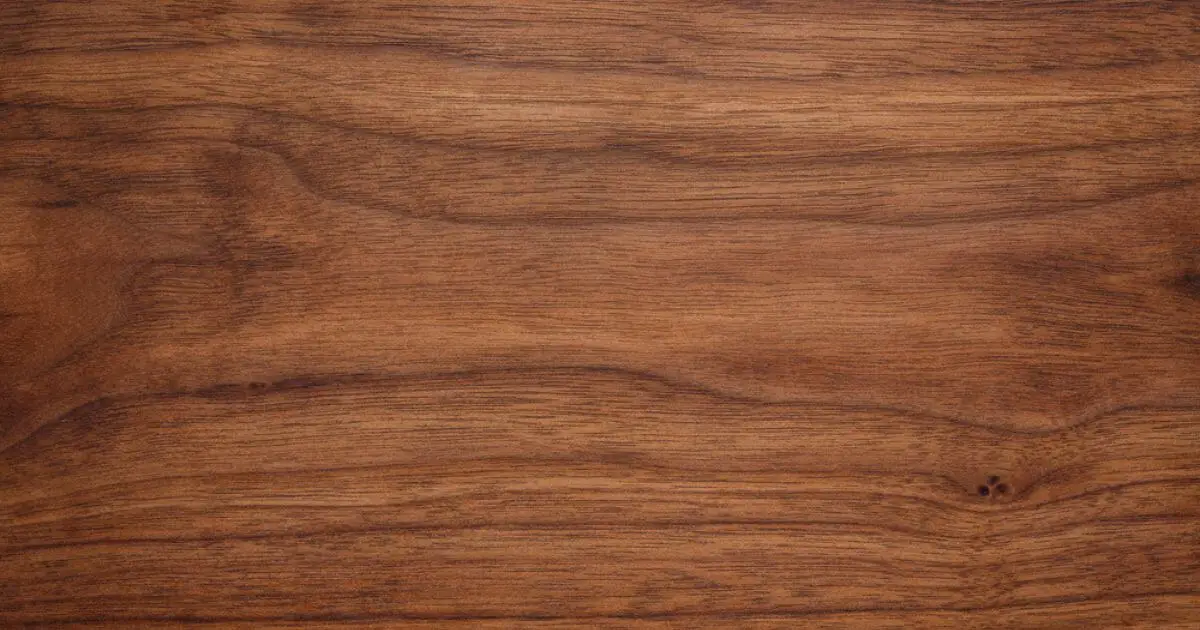Looking for sturdy wood for your project? Morado is a good choice! This gorgeous hardwood, also known as Bolivian Rosewood or Pau Ferro originates from South America, particularly Bolivia and Brazil.
Prized for its stunning appearance, it boasts rich colors ranging from deep brown to violet, often accented with striking black streaks.
Morado’s exceptional durability makes it ideal for high-traffic areas like flooring and cabinets, while its renowned resistance to warping and shrinking ensures lasting beauty and functionality in your project.
Physical Characteristics
Appearance
Morado wood boasts a stunning range of colors, starting from reddish-orange and deepening to dark purple-brown. Striking black streaks often add visual interest throughout. Unlike the darker heartwood, the sapwood is a pale yellow, creating a clear distinction. Interestingly, Morado’s color can lighten over time, transitioning from a deep brown to a lighter golden brown.
Strength and durability
Morado’s high durability makes it perfect for both indoors and outdoors. This resilient wood naturally resists rot, decay, insects, moisture, and fungus due to its natural oils. Making it a long-lasting material in diverse environments.
Finishing
Morado readily accepts stains, finishes, and polishes, offering a delightful range of customization options to complement its natural beauty. A clear finish, in particular, emphasizes its unique color palette and provides protection against moisture and environmental wear.
Weight and Density
Morado is a heavy and dense wood, making it very strong and durable. Its high density also contributes to its excellent dimensional stability.
Common Uses
Morado Wood for furniture
Morado wood stands out as a fantastic option for furniture. Its exceptional durability shields it from decay, rot, and insect infestation, guaranteeing your furniture pieces endure daily use for years to come. Popular uses for Morado wood include:
Additionally, Morado’s density and stability make it much less susceptible to warping, splitting, or shrinking than other types of wood. This results in Morado furniture that retains its pristine form and functionality over time.
Morado Wood for crafting
Morado Wood can be a good choice for crafting, but it is not recommended for beginners. It is very hard and has irregular grains that make it challenging for carvers.
Morado Wood for musical instruments
Valued for its beauty and versatility, Morado wood extends beyond musical instruments and finds use in diverse applications like brush handles, cabinetmaking, and decorative objects.
Morado Wood for flooring
Marado wood is one of the good choices for making high-quality flooring applications.Morado flooring presents a luxurious and unique option for interior spaces, characterized by its rich hues and distinctive grain patterns.
Alternatives and Substitutes
Indian Rosewood: This is the most common substitute for Morado wood, as it shares a similar dark reddish-brown color with streaks of purple and black.
Chechen: This wood is native to Central America and has a wider range of colors, from light amber to dark brown with black streaks.
Macassar Ebony: This wood is known for its dramatic black color with streaks of brown and gray. It is a very hard and dense wood, making it a good choice for furniture, flooring and cabinets.
Workability
Morado wood can be challenging to work with because it is very hard and heavy. It can blunt the cutting edges of tools. Morado wood accepts stains, finishes, and polishes well, allowing craftsmen to enhance its natural beauty and protect it from environmental factors.
Pros of Morado Wood
- Beautiful and unique appearance: Morado offers a distinctive and luxurious aesthetic that can elevate the look of any furniture piece.
- Durability and Strength: Morado is a dense and hard wood, making it exceptionally resistant to wear and tear, scratches, and dents. This ensures your furniture can last for generations with proper care.
- Stability: Morado boasts excellent dimensional stability, meaning it resists warping and shrinking, even in changing environmental conditions. This translates to furniture that retains its shape and form over time.
- Natural Resistance: Morado’s natural oils provide resistance to rot, decay, and insect infestation, making it suitable for various indoor furniture applications.
Cons of Morado Wood
- Cost: Due to its rarity and high demand, Morado can be significantly more expensive compared to other common furniture woods.
- Workability: While not impossible, Morado’s density and hardness require specialized tools and expertise for woodworking due to potential issues like dulling blades quickly. This can translate to higher crafting costs for your furniture piece
FAQ
Can Morado Wood be stained or treated?
Yes, Morado Wood can be stained or treated to enhance its color and protect it from wear and tear. However, it’s essential to use products specifically formulated for hardwoods and follow recommended application guidelines.
Is Morado Wood suitable for outdoor furniture?
Yes, Morado Wood’s natural resistance to decay and insects makes it an excellent choice for outdoor furniture and decking. Proper sealing and maintenance can prolong its lifespan in outdoor environments.
How does Morado Wood compare to other exotic hardwoods?
Morado Wood shares similarities with other exotic hardwoods in terms of durability and aesthetic appeal. However, its distinctive color and grain patterns set it apart, making it a sought-after material for premium woodworking projects.

